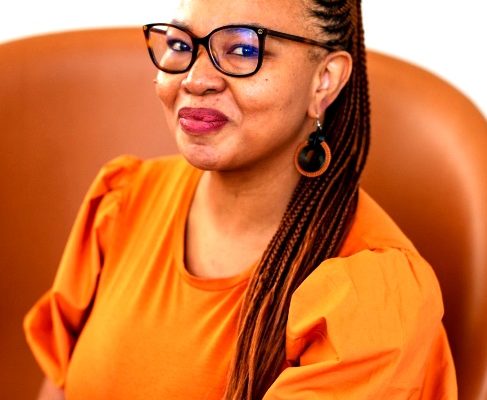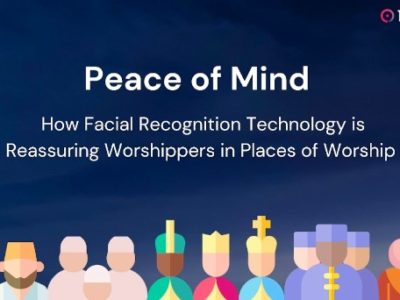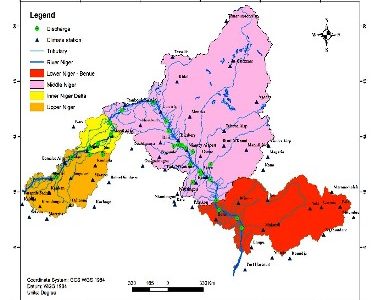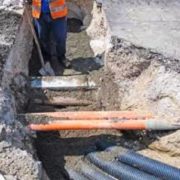It’s been one year since Tétris Design x Build launched its global sustainability code. Tango Matoti, Head of Tétris Workplace Optimisation, presented key insights from the Code’s success over the past year at the API Summit 2022 held at the Marriott Hotel, Melrose Arch last week. She was joined by Bernard Tyler, Tétris Design x Build Director for EMEA.
Launched in 2021, the Tétris Sustainability Code is an APP used for Tétris Design and Build projects that documents a simple assessment of the sustainability goals of each project. The dashboard highlights what was planned in the design and what was delivered by the project allowing clients to use this review to highlight and quantify all steps taken in delivering more sustainable working environments.
RELATED: Fractus and the UPC create a technological hub to develop “deep tech” solutions
“The beauty and benefit of the Tétris Sustainability Code is that it has broadened the sustainability conversation. The Code is not a rigid compliance system, but an agile tool to enhance an organisation’s sustainability journey, wherever they may be on that journey. We’ve found the Code also enables other areas of the business – it’s a strategic lever in the race for talent while giving a clear picture of where immediate sustainability action can be taken,” explains Tyler.
Reflections for a post-Covid workspace
In 2022, sustainability in the workplace has taken on a deeper meaning than just green design, encompassing meaningful social and corporate governance goals. Social responsibility has become a key driver behind decision-making, and there is greater concern with giving back to local communities, creating a circular economy, and sourcing locally.
How the Sustainability Code works
The Sustainability Code is a platform for Tétris’ clients to express to employees their commitment to sustainable workspaces. The score given measures and places a value on the gap between what the team aimed for, and what they achieved.
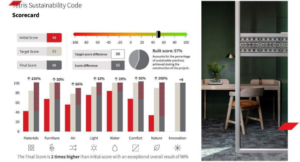

An example of a Tétris Sustainability Scorecard
Putting the Code to good use
- It enables a clearer understanding of design challenges that need to be overcome for sustainable project delivery to occur.
- It measures improvement, quantifying how intervention enhances the space through increased application of low-impact materials that amplify the quality of air, light, water, comfort, and nature.
- It inspires a mindset of innovation, as an appreciation for sustainable applications at every stage of a project allows for experimenting with ways to do things better.
- It puts ideas into practice. Responsibility for green design and practice is shared, moving beyond lip service to a client brief, becoming an ingrained practice rather than a reaction to market trends.
- It elevates awareness of sustainable design globally. Working across 18 countries on an annual average of about 4 000 projects globally, the Tétris group makes a demonstrable impact.
Making a quantifiable impact
Letting the numbers speak for themselves, we are pleased to share the following from the assessments made on our most recent 30 projects across the EMEA.
- 185 000 square meters of sustainable working spaces were created with 23 of the projects achieving sustainability certification.
- 100% of the projects reused some of their furniture and 63% provided spaces to support diversity and inclusion.
- 50% installed air sensors and 80% utilised sanitary fittings with consumption labels and water meters to measure total usage.
- 83% leveraged layout, material and furniture selection to minimise acoustic distractions.
- 96% went beyond plants by using elements that maximised the connection between humans and nature, such as photographs, natural patterns, shapes, textures, colours, images or sounds.
Recognising our influence
For the first time, Tétris has been awarded a Platinum medal in recognition of our sustainability achievements and is therefore in the top 1% of over 90,000 companies that were assessed by EcoVadis, the world’s largest and most trusted provider of business sustainability ratings.
Despite this noteworthy accolade, we recognise that there is still much to achieve in designing and building sustainable spaces that cater for the future while meeting the needs of today. Although the challenges presented by climate change can feel insurmountable, the key lies in the realisation that positive change can be incremental. Simply by taking small steps we can collectively reduce our carbon footprint and it doesn’t matter where we start, as long as we start.
Future-focused, as always
It’s critical for global businesses to realise and accept that there isn’t a choice between becoming sustainable or not, as the costs of neglecting sustainability will be far higher in the long term. Yet sustainability in the built environment is about more than going green to reverse climate change. It must express employee wellbeing, social responsibility, and enable diversity, becoming the foundation of every company’s culture.
As we move into 2023, we look forward to even greater levels of collaboration. Sustainability cannot be achieved in isolation, as the solutions are multi-faceted. We will need to share knowledge, leveraging each other’s thinking, technology and ideas to truly herald an era of sustainability.


